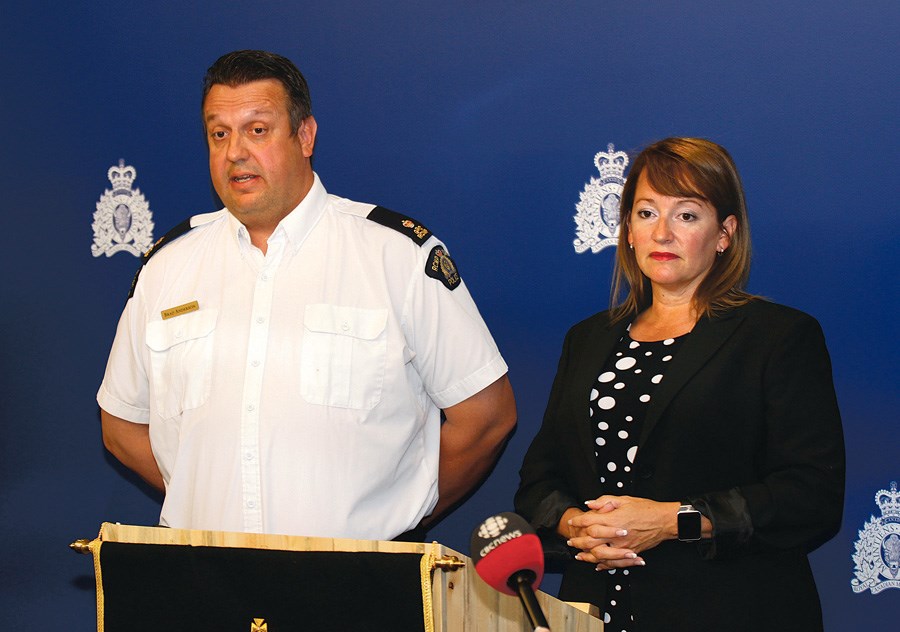After two years of holding steady, the city's crime severity index score is going down.
According to numbers released by Statistics Canada Wednesday, Prince George now sits at 18th out of the 304 communities with a population larger than 10,000. It's a drop of four places in the national ranking based on police-reported offences in 2013.
The city's overall crime severity index score of 137 is measured by giving offences a weight depending on the severity and then takes the total population into account to give a score.
The 14-point decrease in the score from 2012 figures is good news for the community, said Mayor Shari Green. The scores for both violent crimes and non-violent crimes also decreased 10 per cent and 8.6 per cent, respectively.
"The further away from [No. 1] we can get, the better news for our community. The good news also is that crime's down across the nation. Lots of other cities are experiencing similar trends and that's something we should all be very happy about," she said.
The country saw an overall nine per cent decrease in the crime severity index, while the province of B.C. saw a six per cent decline.
North Battleford, Sask., topped the list of 304 and Lloydminster, Alta., took Prince George's previous spot at 14. The highest-ranking major city is Regina, at No. 29.
Locally, police have been trying to be more aggressive and focused on targeted areas, said Insp. Brad Anderson, acting commander of the Prince George RCMP detachment.
"Basically, getting all oars in the water going in the same direction," he said. Priority projects have unfolded in the VLA to target problem residences and absentee landlords.
"So we've had a great deal of success with that. A number of derelict buildings have been closed down, absentee landlords have been more cognizant of what's going on inside their properties and we've made sure a big anchor to our program is that communication and that knowledge," Anderson said.
Programs targeting prolific offenders and the increased number of people in the downtown
core have also panned out.
"This is a small number of people that are creating 95 per cent of our problem. Whether it's intel, whether they're coming out of jail, people phoning in, we're focusing on these individuals, utilizing everything under my power and authority - plain clothes, traffic, general duty - focusing in on these people until we get results," Anderson said.
The results range from doubling the amount of people put into cells to making sure people are connected with health and social services.
Despite the overall downward trend, there is still a strong representation from the north with Williams Lake (No. 4), Quesnel (No. 6), Terrace (No. 10), Prince Rupert (No. 13), Dawson Creek (No. 16) and Fort St. John (No. 19) all joining Prince George in the top 20.
Last November, Green met with fellow mayors from the top-ranked northern B.C. communities and their officers in charge along with Ministry of Justice staff to discuss opportunities for a northern policing strategy.
"Out of that conversation the Blue Ribbon [Committee on Crime Reduction] also has done some work with Dr. Darryl Plecas, who is parliamentary secretary in the Ministry of Justice, and he is just about finished his work and that report should be coming out soon," said Green.
Last year also saw the creation of the Mayor's Task Force on Crime, which put together a crime reduction strategy with four areas of focus: prevent and deter, apprehend and prosecute, rehabilitate and reintegrate and the perception and reality of crime.
Money has been set aside to undertake research on the perception of crime and safety in the community, said Green.
"It's all well and good to say that we live in a safe place but if your experience is different from that then that's not the reality that you have," she said. "And based on the outcomes of that, the feedback we get from that, we'll be able to better refine some specific targeted strategies for people in our community."



